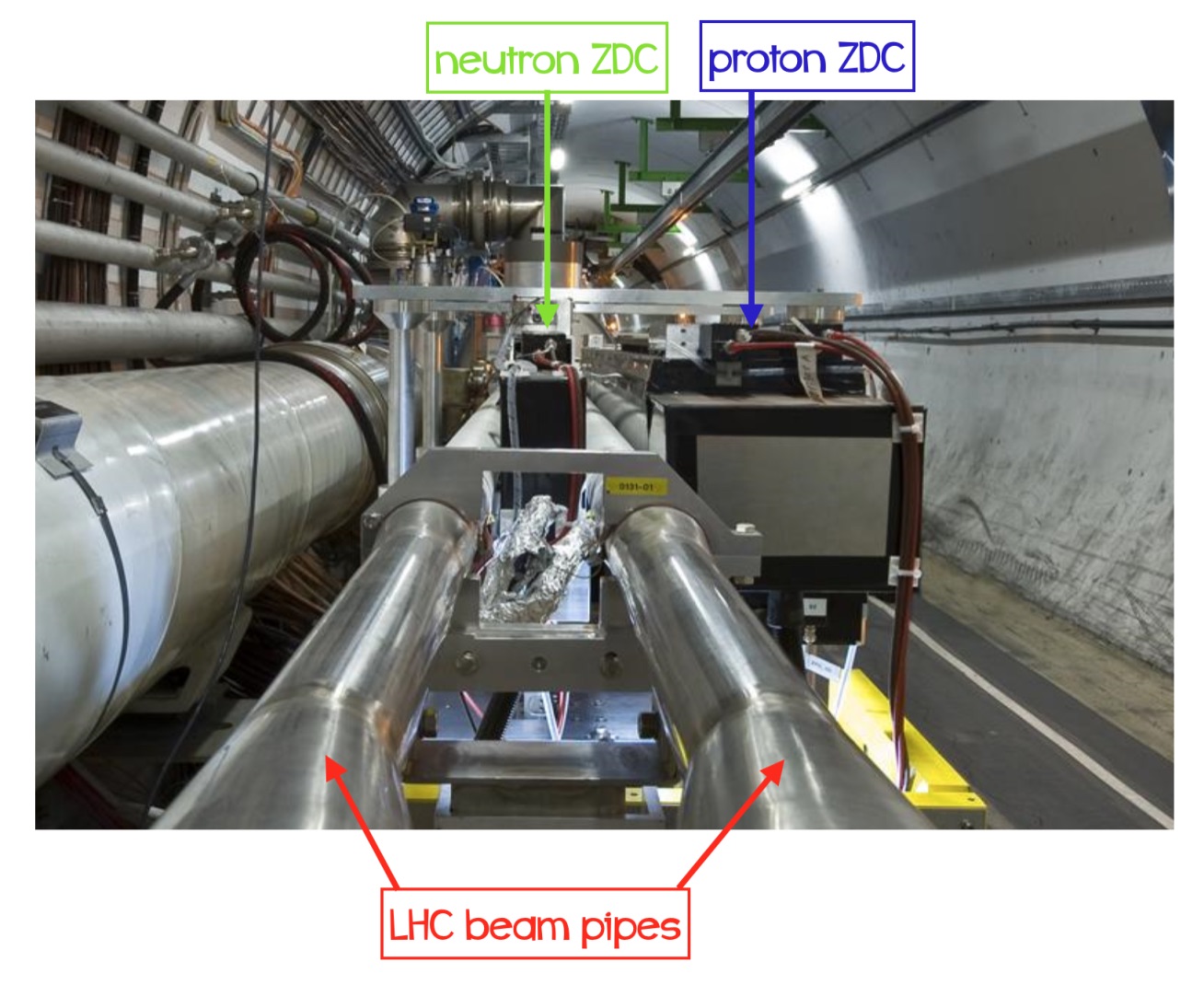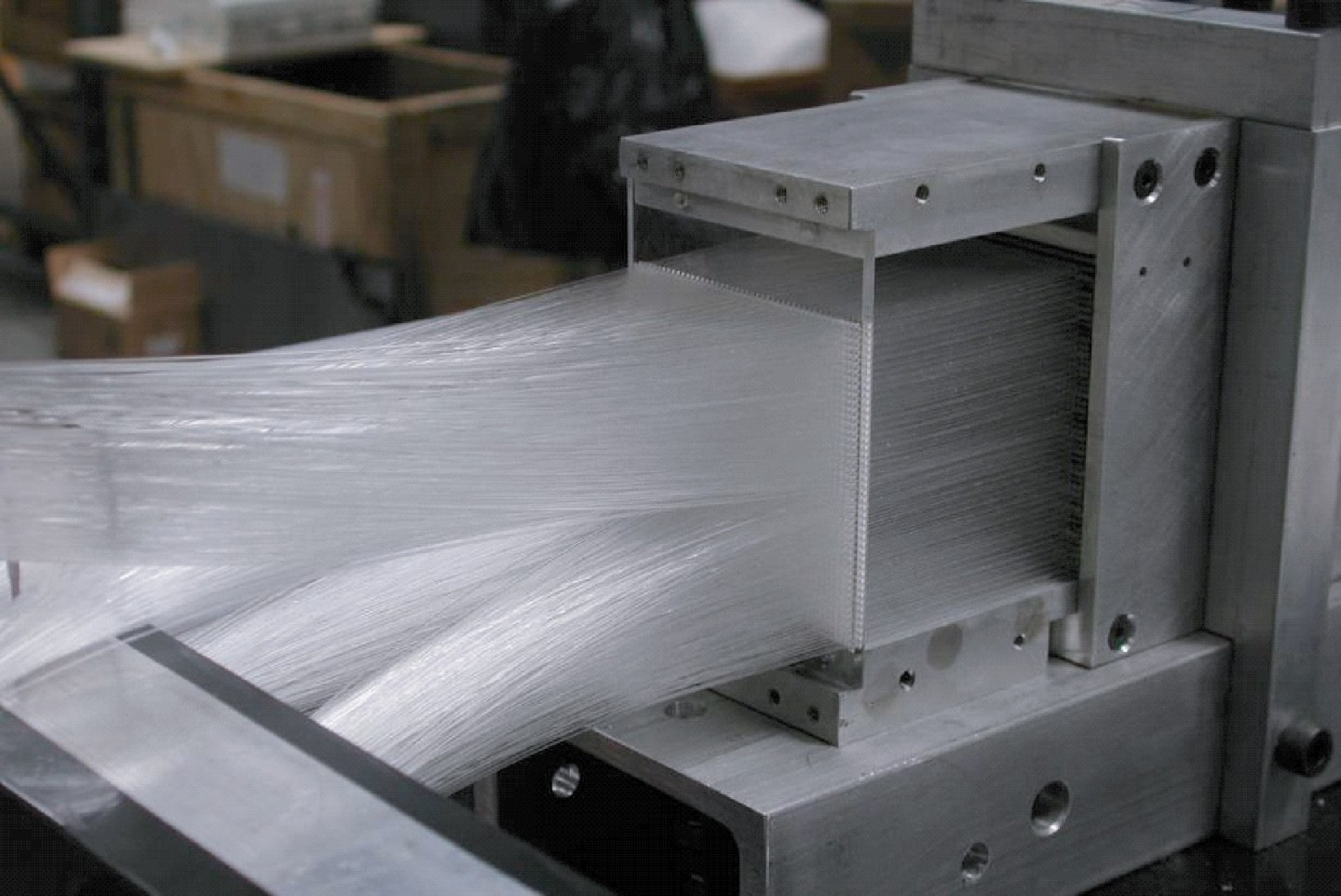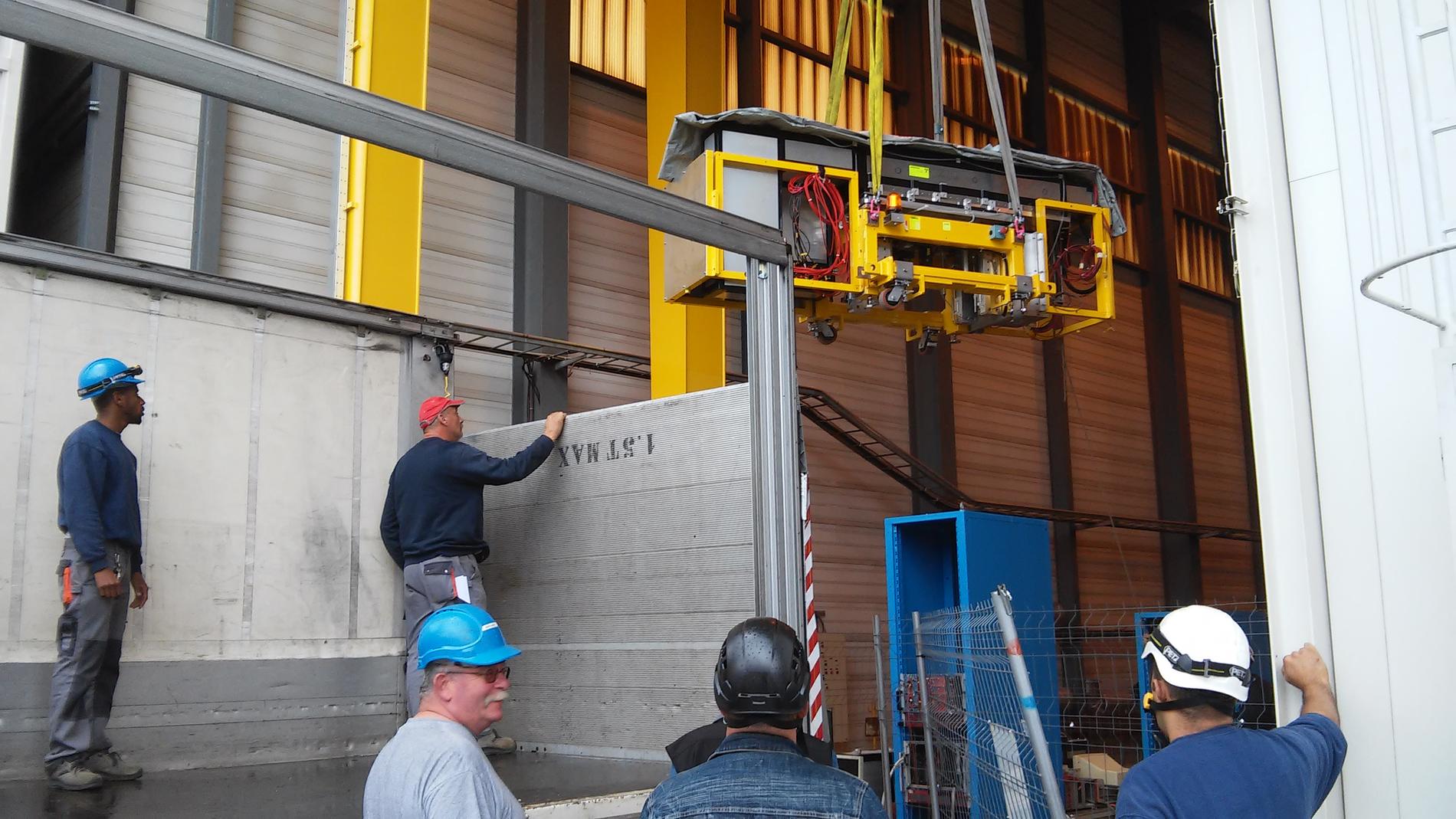
The Zero Degree Calorimeter (ZDC) detects the energy of the spectator nucleons in order to determine the overlap region in nucleus-nucleus collisions. ZDC provides:
Heavy-ion. runs:
- Minimum bias event selection
- Event characterization:
- Centrality of the collision from the energy of the spectator nucleons (related to the magnitude of the impact parameter vector)
- Event plane orientation from the centroid of the spectator neutron spot on the ZN front face (related to the direction of the impact parameter vector).
- Centrality of the collision from the energy of the spectator nucleons (related to the magnitude of the impact parameter vector)
- Absolute luminosity from the rate of electromagnetic dissociation in the neutron channel
pA runs:
- Centrality of the collision from the detection of slow (black and gray) nucleons
pp runs:
- Diffractive event selection

|
The ZDC consists in two identical sets of calorimeters located on both sides relative to the interaction point IP2, 112.5 meters away from it. In that region the two LHC beams circulate in two different pipes. Each set of detectors consists of a neutron (ZN) and a proton (ZP) calorimeter. The ZN is placed at zero degree with respect to the LHC axis, between the two beam pipes, while the ZP is positioned externally to the outgoing beam pipe. The spectator protons are separated from the ion beams by means of the dipole magnet D1, while spectator neutrons fly at zero degree without further changing direction. The ZDC detector is completed by 2 forward EM calorimeters (ZEM) placed at about 7.35 m from I.P.2, on A side, covering the pseudorapidity range 4.8 < η< 5.7. The ZDCs are quartz-fiber spaghetti calorimeters with silica optical fibers as active material embedded in a dense absorber. Their principle of operation is based on the detection of Cherenkov light produced by the charged particles of the shower in the fibers. The response is very fast thanks to the intrinsic speed of the emission process, making such detectors suitable for triggering purposes. Each ZDC is made by grooved dense material slabs, stacked to form a parallelepiped. The ZN and ZP dimensions are different since the two calorimeters have to satisfy different physical and technical requirements. The ZN transverse dimensions are limited by geometrical constraints and cannot exceed the space between the two beam pipes . Therefore a dense absorber, i.e., W-alloy, has been chosen in order to maximize the shower containment. On the contrary the main requirement for the ZP calorimeter is to optimize the detection of the spectator protons, which are spread over the horizontal coordinate by the separator dipole. This request has lead to the design of a rather large device, and therefore to the choice of a less expensive absorber, i.e., brass. The fiber diameter for ZP is larger than for ZN, in order to reduce the number of fibers at a constant filling ratio, and consequently the complexity of the absorber machining. The distance between the fibers (1.6 mm for ZN and 4 mm for ZP) ensures a good uniformity of the response as a function of the impact point. The quartz fibers, hosted in the slab grooves, are placed at 0 with respect to the incident particle direction and come out from the rear face of the calorimeter, directly bringing the light to the photomultipliers. One out of two fibers is viewed by an individual photomultiplier (PMTc), while the remaining fibers are collected in bundles and sent to four different photomultipliers forming four independent towers. The information coming from the PMTc provides a complementary measurement of the shower energy, in particular useful for calibration purposes. The photomultiplier chosen is the Hamamatsu R329-02, a 12-stage PMT, with quantum efficiency of the order of 25% at a wavelength of 400 nm. |
||
ZDC Documents
|
||
ZDC Internal |
||
Photo Galleries |
||
|




